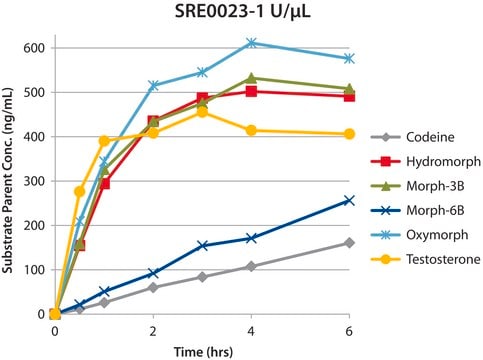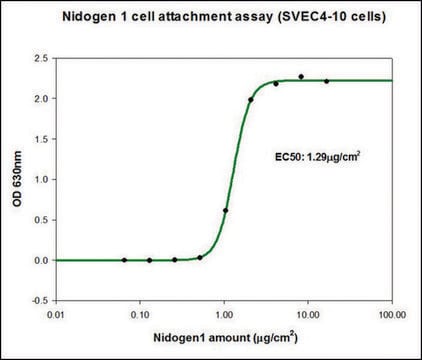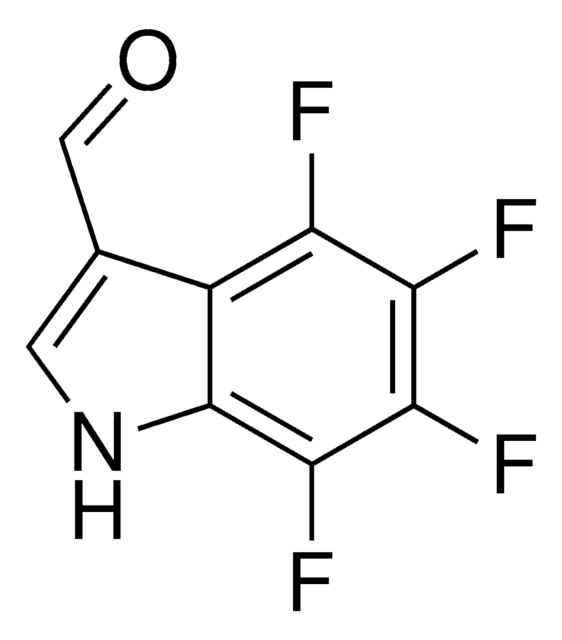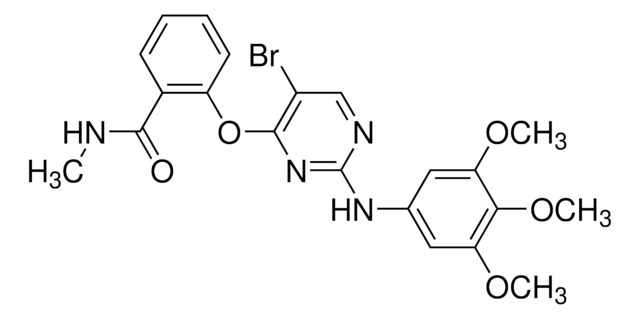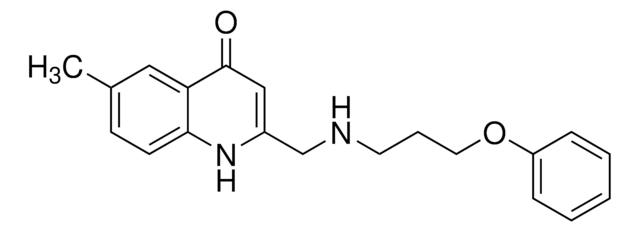SRP3317
ANGPTL-3 human
recombinant, expressed in CHO cells, ≥98% (SDS-PAGE), ≥98% (HPLC)
Synonym(e):
ANG-5, ANGPT5
Größe auswählen
320,00 €
Versandbereit am07. April 2025Details
Größe auswählen
About This Item
320,00 €
Versandbereit am07. April 2025Details
Empfohlene Produkte
Biologische Quelle
human
Rekombinant
expressed in CHO cells
Assay
≥98% (HPLC)
≥98% (SDS-PAGE)
Form
lyophilized
Mol-Gew.
62.0 kDa
Verpackung
pkg of 50 μg
Verunreinigungen
endotoxin, tested
Farbe
white to off-white
UniProt-Hinterlegungsnummer
Versandbedingung
wet ice
Lagertemp.
−20°C
Angaben zum Gen
human ... ANGPTL3(27329)
Allgemeine Beschreibung
Recombinant human ANGPTL-3 is a glycoprotein that migrates by SDS-PAGE (sodium dodecyl sulfate polyacrylamide gel electrophoresis) analysis at an apparent molecular weight of 62kDa, and contains 452 amino acid residues including a C-terminal His tag.
Biochem./physiol. Wirkung
Physikalische Form
Rekonstituierung
Lagerklassenschlüssel
11 - Combustible Solids
WGK
WGK 3
Flammpunkt (°F)
Not applicable
Flammpunkt (°C)
Not applicable
Hier finden Sie alle aktuellen Versionen:
Analysenzertifikate (COA)
Die passende Version wird nicht angezeigt?
Wenn Sie eine bestimmte Version benötigen, können Sie anhand der Lot- oder Chargennummer nach einem spezifischen Zertifikat suchen.
Besitzen Sie dieses Produkt bereits?
In der Dokumentenbibliothek finden Sie die Dokumentation zu den Produkten, die Sie kürzlich erworben haben.
Aktive Filter
Unser Team von Wissenschaftlern verfügt über Erfahrung in allen Forschungsbereichen einschließlich Life Science, Materialwissenschaften, chemischer Synthese, Chromatographie, Analytik und vielen mehr..
Setzen Sie sich mit dem technischen Dienst in Verbindung.